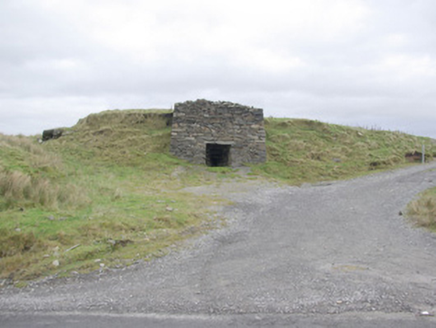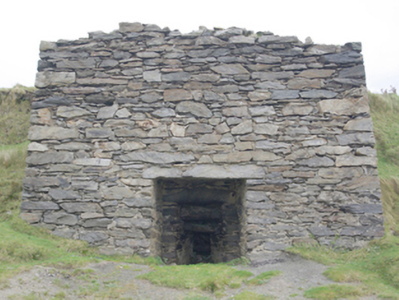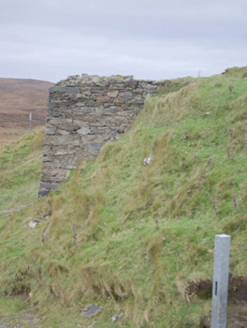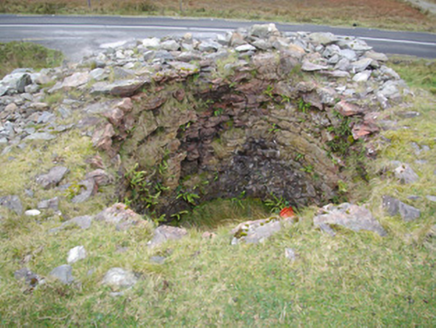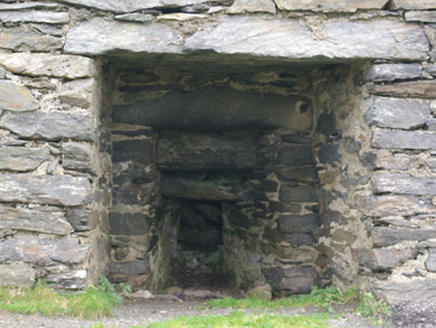Survey Data
Reg No
40909007
Rating
Regional
Categories of Special Interest
Social, Technical
Original Use
Kiln
Date
1860 - 1900
Coordinates
154822, 382672
Date Recorded
31/10/2007
Date Updated
--/--/--
Description
Freestanding single-bay lime kiln on square-plan, erected c. 1860. Tapers outwards towards base. Now out of use. Constructed of roughly coursed rubble stone masonry. Square-headed opening to front (south), the former oven aperture, having stone lintel over. Former loading chamber on ovoid/circular-plan to the north-east having rubble masonry construction; chamber now partially collapsed. Built into rock outcrop adjacent to road and former quarries. Earthen embankment to rear, formerly giving access to loading chamber. Set back from road in rural location to the north-west of Killybegs and to the east of Gleann Cholm Cille/Glencolumbkille.
Appraisal
This interesting former lime kiln, probably erected during the second half of the nineteenth-century, survives in good condition and retains its early character. It is well-built using local rubble stone masonry and is an appealing and unassuming element of the agricultural/industrial and social heritage of County Donegal. The tapering elevation is a typical feature of lime kilns. The embankment to the rear was built/modified to allow for the easy loading of limestone through an opening in the roof structure, while the aperture to the front was used to light the oven for firing the kiln. Lime kilns appear to have come into popular use in Ireland during the eighteenth century and were a very common feature in the rural landscape up until the first decades of the twentieth century. They were used to burn limestone to produce lime, which was used as an agricultural fertilizer and spread on agricultural land, or in construction as a mortar and a render. Lime was also used for lime-washing buildings, particularly farm buildings, as it was regarded as a cleansing agent at the time. This small-scale kiln was probably in use by a local farmer and probably provided lime to small farmers etc. in the immediate environs. Small rural lime kilns started to go out of common usage during the late nineteenth-century with the advent of industrial-scale lime production facilities and improvements in the transport network, particularly the development of the railways. This simple feature is an interesting feature in the picturesque if desolate landscape along the main road from Killybegs and Gleann Cholm Cille/Glencolumbkille, and is an integral element of the built heritage of the local area.
